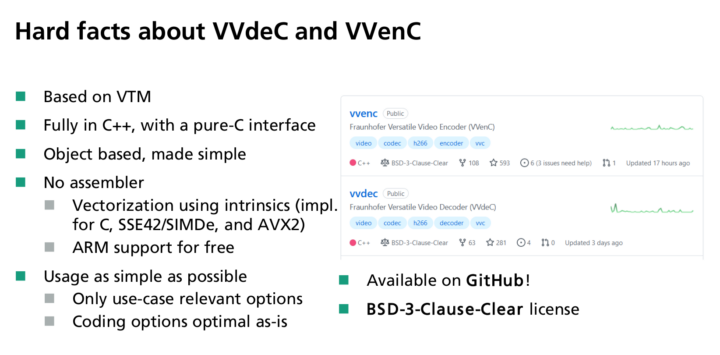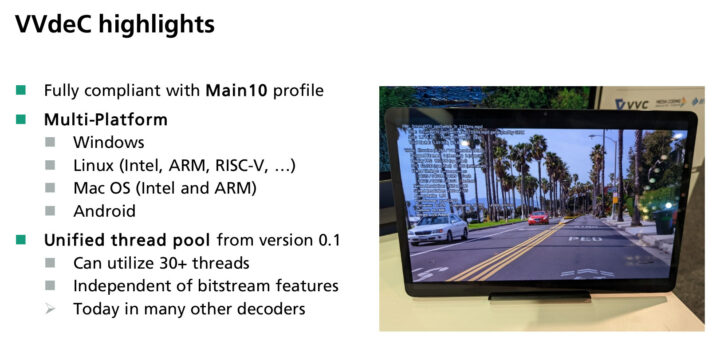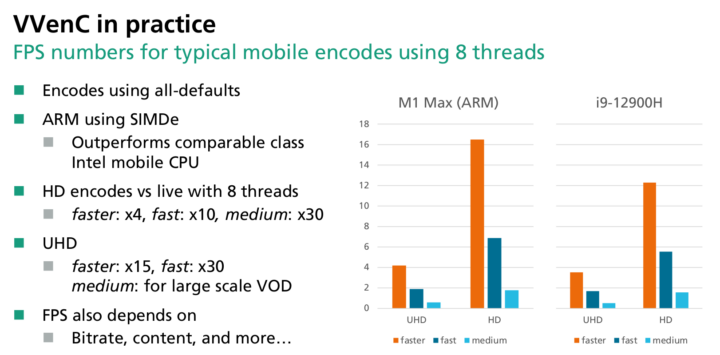VVenC and VVdeC are open-source software H.266/VCC video encoder and decoder respectively that are optimized to use SIMD instructions on x86 (SSE42/SIMDe and AVX2) and Arm, and the decoder runs on Windows, Linux, macOS, and Android.
H.266, aka VCC (Versatile Video Coding) video compression standard was adopted in 2020 promising to reduce data requirements by around 50% compared to the previous H.265/HEVC standard at the same visual quality. H.266 should also outperform the royalty-free AV1 video codec. We hadn’t seen news since the announcement, but this may be changing with the Realtek RTD1319D processor unveiled with support for both 4K H.266 and AV1 video decoding last September, and progress made on the VVenC & VVdeC H.266 open-source software encoder/decoder as been discussed during FOSDEM 2023.
The Fraunhofer HHI group has been working on VVdeC and VVenC since the specifications were finalized in 2022. Both are based on VTM reference software for VCC, are written in C++ with a pure C interface, implement vectorization without relying on an assembler, and are offered under a BSD 3-Clause Clear license that explicitly does not grant any patent rights with the code available on GitHub.
VVdeC is fully compliant with the Main10 profile, can utilize over 30 threads, and works on Windows, Linux (x86, Arm, RISC-V…), macOS (x86 and Arm), as well as Android. Memory useage has been reduced by three times since the first release, and the developers continue making small improvements.
The VCenC open-source H.266 encoder is optimized for VOD (Video-on-Demand) and offline operation and comes with five presets: faster, fast, medium, slow, and slower, each providing a different balance in terms of quality and encoding speed. The encode supports multi-threading but does not work with more than 32 threads at this time. The developers further expect to work on software efficiency. Encoding works faster on the Apple M1 Arm chip compared to an Intel Core i9-12900H processor when using 8 threads.
VVenC & VVdeC can already be integrated into FFmpeg using 3rd party patches, which then allow integration into mpv, VLC, and ExoPlayer. Finally, there’s also the VVdeC Web Player using WebAssembly to play H.266 videos (without audio) in your browser.
Further information may be found in the presentation slides and the FOSDEM 2023 video embedded above where H.266 vs AV1 is shortly discussed at the end of the video.
Via Phoronix

Jean-Luc started CNX Software in 2010 as a part-time endeavor, before quitting his job as a software engineering manager, and starting to write daily news, and reviews full time later in 2011.
Support CNX Software! Donate via cryptocurrencies, become a Patron on Patreon, or purchase goods on Amazon or Aliexpress







